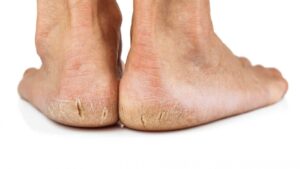Living with diabetes involves much more than simply monitoring blood glucose levels. It’s also important to consider the impact of diabetes on various parts of the body, including the feet. At ModPod Podiatry, we regularly emphasise that good foot care is essential for preventing complications and maintaining an active, fulfilling lifestyle. Here in Australia, where diabetes affects a growing portion of the population, learning how to protect and care for your feet can truly make all the difference.
In this blog post, we’ll explore how diabetes affects the feet, highlight some of the most common foot issues that arise, and offer practical steps to prevent or manage complications. You’ll find references throughout to concerns such as “diabetes and swelling of feet,” “puffy feet diabetes,” “diabetic feet swelling,” and “diabetic ulcers on feet treatment,” because these topics remain highly relevant for those looking to safeguard their foot health. By understanding these issues and taking proactive measures, you’ll be better equipped to maintain healthy, happy feet for years to come.
Why Does Diabetes Affect the Feet?
Diabetes can cause prolonged high blood sugar (glucose) levels, which may damage the nerves (neuropathy) and blood vessels that supply the feet. When nerves in the feet are affected, the resulting condition—peripheral neuropathy—often reduces sensation. Injuries such as cuts, blisters, or abrasions can go unnoticed for longer periods, increasing the likelihood of infection or other complications.
Additionally, damaged blood vessels can lead to poor circulation (peripheral arterial disease), meaning it takes longer for wounds to heal. Even minor injuries can develop into serious issues, including ulcerations and infections that require specialised treatment. Because feet are sometimes overlooked, these changes can progress rapidly without proper attention.
In Australia, health organisations like Diabetes Australia and the National Diabetes Services Scheme (NDSS) emphasise comprehensive foot care, regular check-ups, and early intervention as core components of effective diabetes management. By staying vigilant about your foot health, you can prevent minor concerns from escalating and address serious issues quickly.
Common Foot Issues in Diabetes
1. Diabetes and Swelling of Feet
Swelling in the feet and ankles can occur due to fluid retention, poor circulation, or a combination of both. Ongoing swelling may indicate a range of underlying problems, such as reduced kidney function, inadequate blood flow, or inflammation. While not always painful, persistent swelling is often uncomfortable, restricts mobility, and increases the risk of injury.
2. Puffy Feet Diabetes
“Puffy” feet can develop when blood vessels and lymphatic channels are not draining fluid efficiently. In the context of diabetes, where circulation is already compromised, swelling can become more noticeable or persistent. It’s important to discuss puffy feet with a healthcare provider, as it could signify an emerging complication that needs attention.
3. Swollen Feet and Diabetes
When diabetes leads to reduced blood flow, the body may struggle to manage fluid properly in the lower limbs. Swelling commonly occurs in the ankles and feet, sometimes accompanied by redness or tenderness. Swollen feet can also worsen with long periods of standing or sitting, especially if you don’t elevate your legs. Although occasional mild swelling might not be a major concern, chronic or severe swelling warrants a closer look by a professional.
4. Diabetic Feet Swelling
Over time, high blood sugar levels can cause damage to blood vessels and nerves, leading to a condition where swelling becomes a regular issue. Diabetic feet swelling can make it harder to find comfortable footwear and may place extra pressure on areas prone to friction or sores. Addressing the underlying causes—like blood glucose control and circulation problems—plays a crucial role in preventing further complications.
5. Diabetes and Dry Feet
Dry skin is another common challenge for individuals with diabetes. Poor circulation can reduce the delivery of nutrients and essential oils to the skin, causing it to lose moisture. The result is dry, cracked feet that can become painful, itchy, or prone to bacterial and fungal infections. Regularly moisturising and maintaining a skin care routine can significantly help combat dryness.
6. Diabetic Ulcers on Feet Treatment
Foot ulcers rank among the most serious complications linked to diabetes. They often start with small injuries, which go unnoticed due to reduced sensation. Over time, these wounds can deepen, become infected, and pose a serious threat to foot health. Proper treatment may include cleaning and dressing the wound, debridement (removal of dead tissue), pressure offloading (e.g., special shoes or casts), and possibly antibiotic therapy if an infection is present. Early intervention is crucial to minimise the risk of complications like infection or amputation.
7. Dry Feet Diabetes
Ongoing dryness may lead to cracks and fissures in areas of high pressure, such as the heels. These fissures can be painful and may bleed or open the door to infections. Ensuring skin remains clean and hydrated is essential, and in severe cases, it’s wise to see a podiatrist or other healthcare provider for targeted advice.
8. Itchy Diabetic Feet
High blood sugar can contribute to fungal infections like tinea (athlete’s foot), which causes itching, redness, and peeling. Diabetic individuals may be more prone to infections due to compromised circulation and immune response. Proper hygiene, such as thoroughly drying feet after bathing and avoiding tight, poorly ventilated footwear, can help keep these infections at bay.
The Link Between Diabetes and Foot Swelling
Whether described as “puffy feet diabetes” or “diabetic feet swelling,” swelling in the lower limbs often signals an underlying problem. Common contributors include fluid retention, compromised kidney function, poor circulation, and lifestyle factors such as inadequate activity levels. Ill-fitting shoes or socks can further aggravate swelling by restricting blood flow.
If swelling becomes a regular occurrence, it’s important to seek professional guidance. At ModPod Podiatry, we provide thorough assessments that examine foot health, circulation, and any biomechanical factors that might lead to discomfort. We can also collaborate with other healthcare professionals to identify and address any systemic causes, ensuring you receive comprehensive and personalised care.
Prevention and Management Strategies
1. Regular Foot Examinations
Visiting a podiatrist for annual diabetic foot assessments should be standard practice, although more frequent visits may be necessary if you have a history of foot ulcers or other complications. These routine appointments assess circulation, sensation, and structural integrity. At home, make a habit of inspecting your feet daily for any changes in colour, swelling, lesions, or cracks. If you notice anything unusual, contact your healthcare provider sooner rather than later.
2. Maintain Optimal Blood Sugar Levels
Ensuring blood glucose remains within a healthy range is one of the most effective ways to reduce complications, including those affecting the feet. Following a balanced diet, engaging in regular physical activity, and adhering to medications or insulin regimens can all help stabilise your blood sugar. Consistent control helps protect blood vessels and nerves, which in turn benefits your feet.
3. Moisturise and Protect
Dry skin can quickly lead to cracking and infection. To tackle concerns like “diabetes and dry feet,” use a gentle, fragrance-free lotion daily. Focus on the soles and heels, but avoid the spaces between your toes where excess moisture can encourage fungal infections. If you’re unsure which products are safe, consult your podiatrist or pharmacist.
4. Wear Appropriate Footwear
Footwear plays a significant role in preventing issues such as “diabetic ulcers on feet.” Choose shoes that fit well and provide enough room for your toes to move freely. Look for soft, breathable materials and avoid seams or rough edges that could rub and cause blisters. Replace shoes once they show signs of wear, and consider orthotic inserts if you have specific foot shape concerns or pressure points that require extra support.
5. Elevate and Exercise
To address “puffy feet diabetes” or “swollen feet and diabetes,” try to incorporate simple movements or exercises that promote blood flow. Light walking, calf raises, and toe curls can help. When resting, elevate your feet to encourage fluid to drain away from the lower extremities. If you spend long periods sitting, set reminders to stand up and stretch or walk for a few minutes every hour.
6. Prompt Wound Care
Reduced sensation can mean small cuts or blisters go unnoticed until they become problematic. It’s critical to examine your feet daily and clean any minor wounds with mild soap and warm water. Cover them with a clean dressing to protect the area and monitor for signs of infection, such as redness, swelling, or discharge. If a wound doesn’t improve within a couple of days, consult a healthcare professional.
7. Effective Treatment for Foot Ulcers
“Diabetic ulcers on feet treatment” often involves a multi-faceted approach, including regular dressing changes, close monitoring of the wound, and managing pressure through offloading techniques. Your podiatrist might recommend wearing specialised shoes, casts, or braces to redistribute weight away from the ulcer. Antibiotics may be prescribed if infection is present. Addressing an ulcer promptly can help prevent complications like deep infection or amputation. K-Laser has also been shown to improve ulser healing rates.
8. Preventing and Managing Infections
“Itchy diabetic feet” often results from fungal or bacterial infections, which thrive in moist, warm conditions. Make sure your feet are fully dry after bathing, and consider using an antifungal spray or powder if you’re prone to fungal growth between the toes. Changing socks regularly and opting for breathable, natural-fibre footwear can also help reduce the risk of infection.
When to See a Podiatrist
Anyone living with diabetes should have their feet assessed at least once a year by a qualified professional. Certain warning signs might necessitate an immediate or more frequent visit:
- Ongoing or severe swelling that doesn’t improve with rest or elevation
- Redness, warmth, or other signs that an infection may be developing
- Persistent dryness and cracking, especially if skin is breaking or bleeding
- Development of calluses, corns, or changes in foot shape that cause discomfort
- Unusual odours or discharge, which may indicate an underlying infection
At ModPod Podiatry, we offer comprehensive diabetic foot assessments and work closely with you to develop a tailored management plan. Our goal is always to keep your feet in the best possible shape and to address any complications before they escalate.










